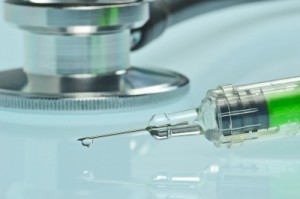Industry Spotlight: So You Want to Patent a Medical Device?

We have had the pleasure of working with some inventors who have enjoyed huge success by developing cutting-edge medical devices. This is an area that many people want to break into because it can be very profitable. However, the medical device market is very competitive, and the players are sophisticated. In order to succeed, you need a good patent strategy to protect your idea.
It can be very helpful to think about some of the issues a patent attorney will want to ask you about before you meet with one. There are certain types of information that patent attorneys will often seek, and it can streamline the process if you begin thinking of these things ahead of time. A good patent application requires good collaboration between the inventor and attorney. The more you understand about what the attorney will be looking for, and why, the more efficient and productive your collaboration will be.
Identify the Key Benefits of Your Device
Your device will be used by medical practitioners. Think about how the device will benefit them and develop a list of the benefits. Typical ones include:
1) Improved ease of use/ergonomics;
2) Disposability (avoiding the need for sterilization procedures and re-use);
3) Reducing patient trauma;
4) Simplicity of design (may reduces device failures); and
5) Improved safety.
In thinking about these issues, consider the devices on the market that your device is intended to improve upon.
Link the Benefits of Your Device To Its Structure and Operation
In order to get a patent, your attorney needs to be able to describe the structure and operation of the device in a manner that distinguishes earlier devices (prior art). Ultimately, he will need to include those features in a set of patent claims. It is not enough to list the benefits of the device. You need to link them to the technical features that make them possible. There are likely some key structures or combinations of structures that achieve the benefits of the device. Focus on those. Some inventors tend to think of patent applications in they way that they think of a marketing brief. While that process is helpful for zeroing in on the benefits of the device, it needs to be taken a step further to link the technology to the benefits.
Another key consideration is to work through how a practitioner would specifically use the device during procedures. You may be able to claim methods of using the device in your patent application, and these can provide you with a different scope of protection than claims directed to the apparatus itself. Method claims have pros and cons. The pros are that you can often avoid limiting the claims to specific components and instead describe method steps that are made possible by the components. This will limit the manner in which your competitors can design around your patent (should you be successful in getting one). The cons are that the direct infringers are actually the practitioners themselves. Of course, these are your customers, and you probably would not want to sue them for patent infringement in any event. However, under certain circumstances, competitive device suppliers may be liable for infringement committed by their customers. This is referred to as “indirect infringement,” or its subcategories “contributory infringement” and “active inducement of infringement.”
If you are seeking foreign patents, you should be aware that many foreign countries do not allow patents on methods of medical treatment. However, in many cases you can re-craft your claims to cover suppliers whose customers perform the methods.
Don’t Forget the Aftermarket
Some medical devices have a reusable component and a disposable (consumable) component. For example, a biopsy system may include disposable needles or cannulae that come into contact with patient tissues. The particular way your patent claims are drafted may greatly impact whether and to what extent you can protect your aftermarket in the consumables. Patent claims that combine the reusable and consumable components may not prevent your competitors from supplying their version of the consumables and eating away at your aftermarket market share. For some medical devices, the lion’s share of the profits is attributable to the aftermarket. The difficulties of protecting the aftermarket are discussed in greater detail in an article that I wrote for Medical Device Link a few years ago. The article can be found here.
Addressing this requires some thought. To protect the consumables, you need patent claims directed to them as stand-alone items (without the reusable component). This can be difficult because consumables may be commodity items or may otherwise have no independent patentable features. In that case, stand-alone consumable claims will not be possible. If possible, try to design in some new features into the consumable, especially features that are allow it attach to or work with your commercial device. You can also possibly give the consumables a unique appearance and protect them with design patents. This will at least prevent slavish knock-offs of your consumables.
Take a Look at Some Existing Medical Device Patents
Patent lawyers have their own way of thinking about devices and inventions that may be a bit foreign to you. Ultimately, your collaboration will be more productive if you understand what a patent looks like and how it describes an invention. Take some time and familiarize yourself with some existing medical device patents. You can use the U.S. Patent & Trademark Office’s Manual of Classification to identify the classes that are relevant to your technology area. To access it, go to http://www.uspto.gov/web/patents/classification/selectnumwithtitle.htm and look for classes 600-623. If you click on any of these classes, you’ll see their respective subclasses and can click on the “P” to access issued patents in that subclass or “A” to access published applications in that subclass.
